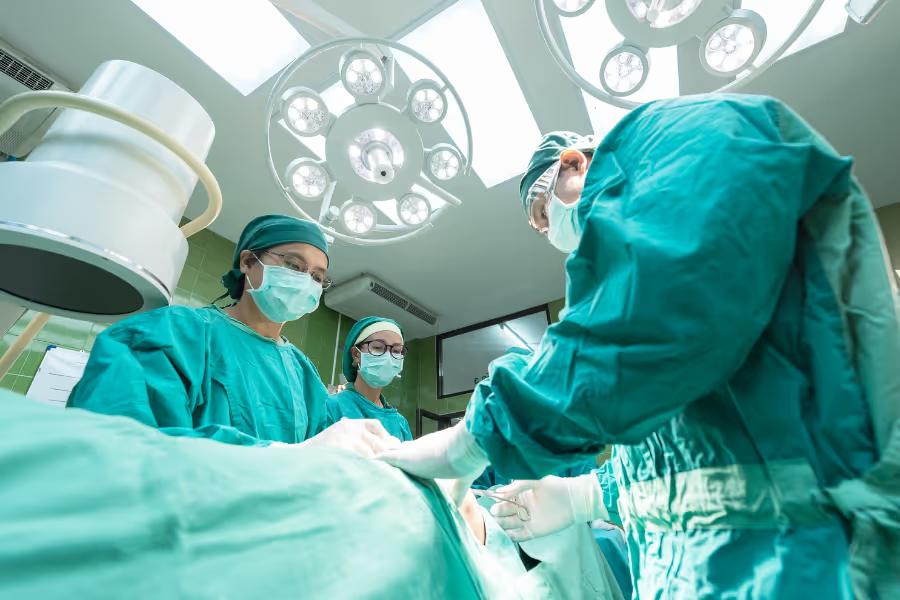While many bunions are not an issue, surgery can become necessary. Find the right surgeon that fits your needs below, serving Canadians in major cities like Vancouver, British Columbia; Edmonton, Alberta; Toronto, Ontario; and Montréal, Québec.
Informational purposes only, not medical or legal advice. Please consult your doctor or surgeon.

Bunion surgery aims to correct a bony bump that forms on the side of the foot at the base of the big toe, which causes the big toe to angle towards the other side of the foot. In certain cases, this causes significant pain, swelling, and impaired function in the foot. Practically speaking it makes walking uncomfortable, and many shoes unbearable.
Surgical intervention is used to remove the bony bump, help align the big toe to a natural position, regain proper foot function, and get rid of pain.
Consults and surgery dates are typically scheduled in weeks—not months—which means faster relief and return to work, sport, and caregiving duties.
Ability to choose a surgeon based on what's important to you (i.e. specific expertise, experience, qualifications, personal connection).
Private pathways typically provide a clear quote and surgery date/timeline, so you can arrange time off, caregiver help, and rehab. This certainty can ease anxiety and help families plan for recovery.

Bunion surgery usually takes 45 to 120 minutes, depending on severity of the underlying issue.

The recovery process varies patient to patient. Your recovery might look quite different, so please seek further guidance from your surgeon. In general here is what you can expect:
Week 1:
Weeks 2-4:
Weeks 5-12:
Weeks 13-52:
Private clinics in Canada charge between $5,000 - $8,000 per foot.
In the United States, the average cost is $8,200 per foot.
Costs vary so much because of location, surgeon experience, facility type, complexity, and included services (some clinics offer all-inclusive, while others charge separately for anesthesia, followup care, etc.).
Most quotes for private bunion surgery cover:
What’s usually not included:
Choosing your surgeon is one of the benefits of going the private route. Here’s what to consider and the key questions to bring to your bunion surgery consultation.
Some 6% of Canadians have hallux valgus (bunions), but many do not need surgery. But your bunion may require surgery if it's causing significant pain, deformity in the big toe, immobility, or compromised quality of life.
It's advisable to seek out more conservative treatments before surgery, such as orthotics, padding, or toe spacers. However, if you've already exhausted these measures, and the pain is worsening and foot function is getting worse, then you are likely a candidate for bunion surgery.
No, you do not need a referral for private bunion surgery in Canada. You can book a consultation directly with a surgeon, and they will review your condition, symptoms, and any previous treatments or diagnostics.
Your surgeon will provide you with guidance on how to prepare, but you can expect some pre-surgery exercises to help with stiffness, muscle weakness, and range of motion issues. If you smoke, you will be advised to stop to improve healing outcomes. Depending on your weight, you may be advised to diet and exercise to reduce surgical risks and improve healing outcomes.
Home prep: We recommend taking the time to rearrange your home to prepare for the first few weeks after surgery. Remove anything that presents a tripping hazard (chords, sliding rugs, loose items).
Support: Try to arrange for someone who can reach you in the event of an emergency for the first several weeks/months after surgery.
Work: If possible, you may need to request time off work to recover, especially if you need to be on your feet.
Post-surgery practice: You might consider 'practicing' daily activities with substantially limited range of motion, such as getting in and out of the car, getting in and out of bed, putting on and taking off shoes, etc.
Your personal risk depends on deformity severity, procedure type (MIS vs open chevron/scarf, Lapidus fusion), bone quality, health, and rehab. Discuss specifics with your surgeon.
Common and usually temporary
Less common
Uncommon but important
Procedure‑specific considerations
Risks of delaying or not having surgery (when symptoms are significant/persistent).
When watchful waiting is reasonable
As always, please consult your doctor or surgeon.
Bunionectomies involve an incision along the top or side of the foot that the surgeon uses to remove the bony bump, and realign the toe and foot muscles and ligaments.
The MICA procedure involves a smaller incision, faster recovery, and less pain and scarring.
Your surgeon will advise you what surgery suits your needs based on severity of your bunion, joint flexibility, presence of arthritis, and foot injury history.

Browse vetted bunion surgeons across Canada. Compare prices, qualifications, locations.
BROWSE SURGEONS